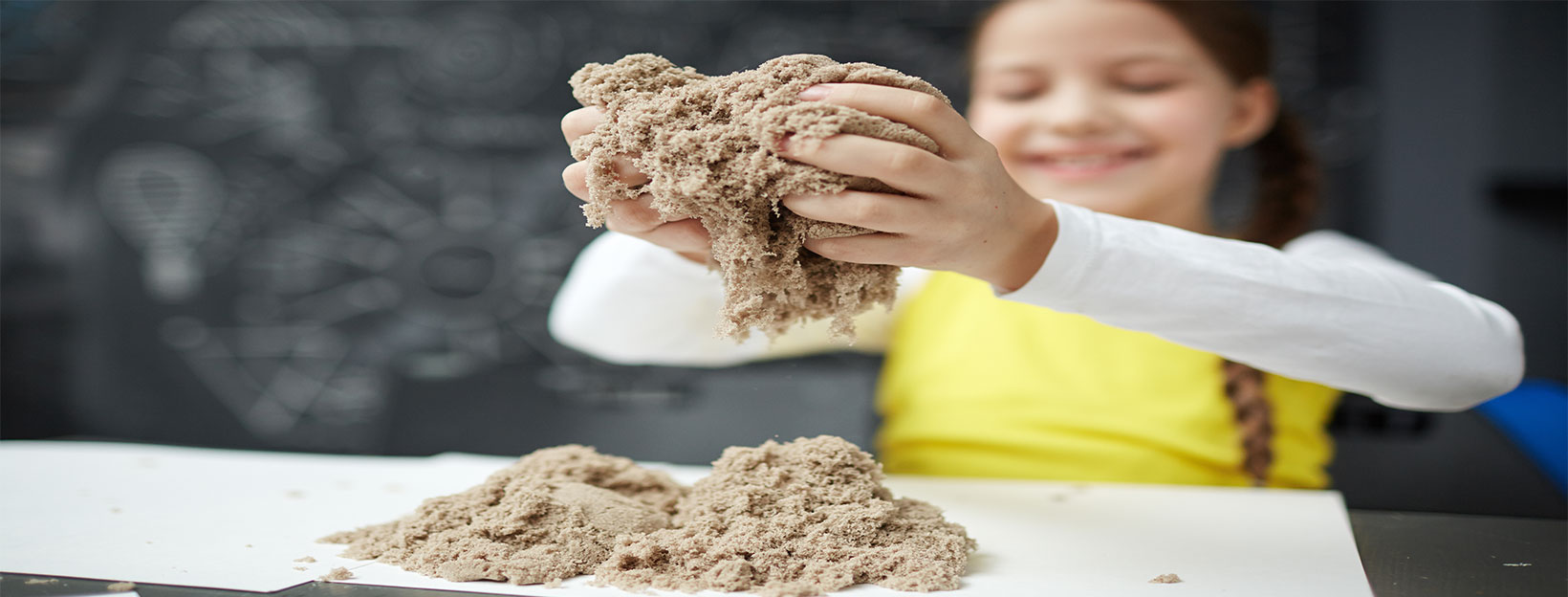
Which toys are fun for kids… and help them learn and grow?
Whether shopping for the holiday season or a birthday gift, why not find a toy that may help a child reach developmental milestones and address sensory needs? As a pediatric occupational therapist, I definitely have a child gift giving advantage, as I get to observe how children in our clinics like (or dislike) a variety of toys each day.
My Ultimate Gift Guide includes therapeutic toys that are 100% kiddo approved! They are not simply toys that a child will “tolerate”. They’re actually “go-to items” that I have repeatedly seen children “work” for and enjoy during their therapy sessions! As a rule, I try to make therapy toy recommendations as economical as possible. If you are looking for other budget friendly solutions, check out my blogs on Sensory Stocking Stuffers or Sensory Christmas Gifts.
For the current list, I am focusing more on the fun AND therapeutic factors of each item recommended. This list includes items that can be obtained from the local dollar store, all the way up to over $100. However, the vast majority of items are in the much more reasonable price range of $20-30, and many are even less than that.
Finally, as a disclaimer, I provided a rough price, website link, and picture for each item. These are simply examples and often not actual brands of items that I have tried. Feel free to read the reviews and choose similar, alternate items. Most images obtained from Amazon.com or Walmart.com.
Now, let the fun begin! On to my gift list.
Magna-Tiles ($50). Many kiddos will have LEGOS on their list. And while I DO love LEGOS for fine motor development and overall child creativity, the pieces seem to get swept under the coffee table, or worse, stepped on by bare feet. OUCH! What I love about Magna tiles is that they are large enough that that young hands can manipulate them, large enough that you don’t have to worry about little siblings choking on them, yet challenging enough that older children enjoy making more complex structures, too. Even I like joining in on the fun! A win for the whole family!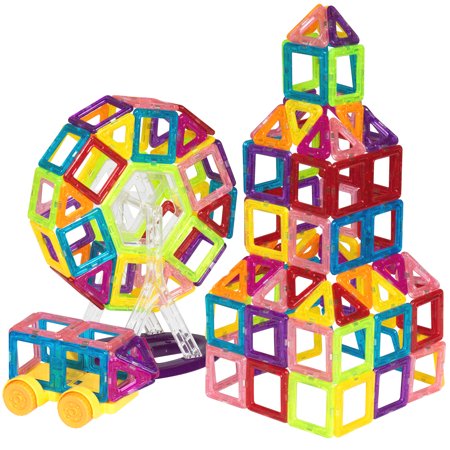 Crazy Forts ($45). Now THIS is something to keep your children busy and creative on cold/snowy winter days. My daughter loved building with these so much when she was in preschool, that I bought her 2 sets for Christmas so that she and older bother could build bigger structures. Now she is 8, and is currently staying busy on this freezing day while I work on this blog! Not only will these forts keep your kiddos busy while you get your own work done, but they also double to create cozy sensory spaces as well. They do sell various covers, but my kids have found that an old fitted sheet or standard sheet works quite well as a cover. Then they pile in throw pillows and blankets for a quite comfy little nest that is still big enough for their very tall mama to crawl into as well!
Crazy Forts ($45). Now THIS is something to keep your children busy and creative on cold/snowy winter days. My daughter loved building with these so much when she was in preschool, that I bought her 2 sets for Christmas so that she and older bother could build bigger structures. Now she is 8, and is currently staying busy on this freezing day while I work on this blog! Not only will these forts keep your kiddos busy while you get your own work done, but they also double to create cozy sensory spaces as well. They do sell various covers, but my kids have found that an old fitted sheet or standard sheet works quite well as a cover. Then they pile in throw pillows and blankets for a quite comfy little nest that is still big enough for their very tall mama to crawl into as well!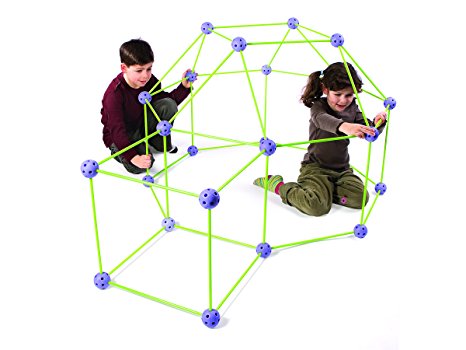
Kinetic Sand ($10). This one is on my own Christmas list this year! I love this stuff but have yet to get any of my own. This “sand” has the consistency of brown sugar, so it sticks & packs together nicely like wet beach sand. This makes it great for building and molding, but also makes it a bit less messy than traditional dry sand. It’s excellent for helping children with tactile defensiveness learn to enjoy a broader range of textures.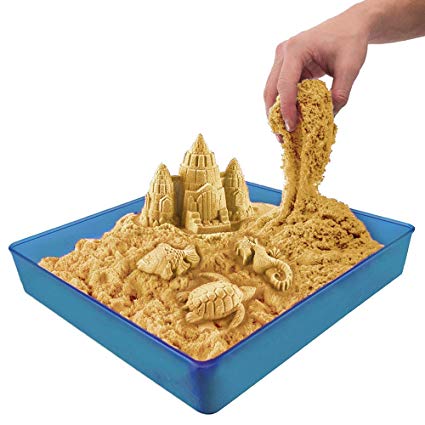 Floam ($12). I got this several years ago as a Christmas present. It has the slightly sticky texture of a Rice Krispy treat, and you can roll it into a ball or a snake, but it truly never dries out. Amazing stuff! I often use Floam with my patients at the end of our therapy sessions as a “reward” for completing all of their work. Again, this texture is also great for working on tactile defensiveness, and is also fantastic for hand strengthening and bilateral coordination as the child rolls the Floam into various shapes.
Floam ($12). I got this several years ago as a Christmas present. It has the slightly sticky texture of a Rice Krispy treat, and you can roll it into a ball or a snake, but it truly never dries out. Amazing stuff! I often use Floam with my patients at the end of our therapy sessions as a “reward” for completing all of their work. Again, this texture is also great for working on tactile defensiveness, and is also fantastic for hand strengthening and bilateral coordination as the child rolls the Floam into various shapes. 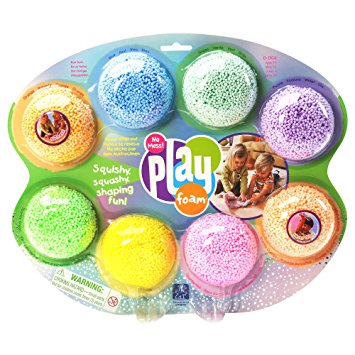 Slime Making Kits ($25). Slime making is a HUGE hit with our older children in the clinic, as well as with my daughter and her friends. There are several different recipes to be found on the Internet, and you can make cups of the sticky substances for very little cash by following the recipes and measuring the individual ingredients. This is perfect for older clients with goals for measuring and following written directions. But the individual ingredients are not so pretty to wrap up under the tree, so the complete kits are a bit more appealing for the holiday season. And once again, slime is fantastic for hand strengthening, dexterity, and working on tactile defensiveness.
Slime Making Kits ($25). Slime making is a HUGE hit with our older children in the clinic, as well as with my daughter and her friends. There are several different recipes to be found on the Internet, and you can make cups of the sticky substances for very little cash by following the recipes and measuring the individual ingredients. This is perfect for older clients with goals for measuring and following written directions. But the individual ingredients are not so pretty to wrap up under the tree, so the complete kits are a bit more appealing for the holiday season. And once again, slime is fantastic for hand strengthening, dexterity, and working on tactile defensiveness.
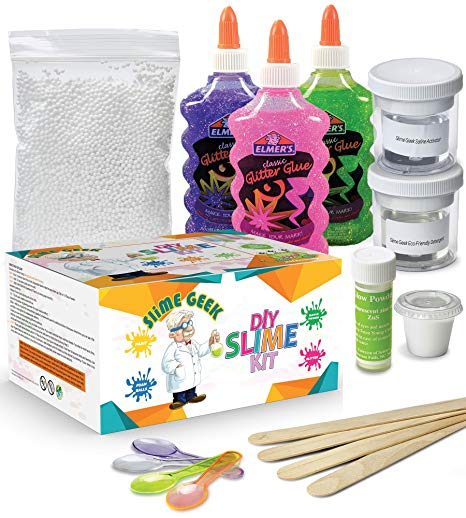 Easel ($65). An easel is fantastic if you want to wrap up a huge box that won’t even fit under the tree. The real reason I like an easel is that it is one of the best tools for developing handwriting skills in preschool and early elementary-aged children. Easels are fun. Budding artists will feel authentic, grown up, and motivated when completing their art projects on an easel rather than simply at the table. In addition, writing/drawing/coloring on a vertical surface is ideal for promoting proper pencil grasp, helping with directional concepts, and overall strengthening for the entire arm and shoulder girdle. I like to look for easels that have the capability for chalk, paper, and dry erase surfaces, like the one listed below.
Easel ($65). An easel is fantastic if you want to wrap up a huge box that won’t even fit under the tree. The real reason I like an easel is that it is one of the best tools for developing handwriting skills in preschool and early elementary-aged children. Easels are fun. Budding artists will feel authentic, grown up, and motivated when completing their art projects on an easel rather than simply at the table. In addition, writing/drawing/coloring on a vertical surface is ideal for promoting proper pencil grasp, helping with directional concepts, and overall strengthening for the entire arm and shoulder girdle. I like to look for easels that have the capability for chalk, paper, and dry erase surfaces, like the one listed below. 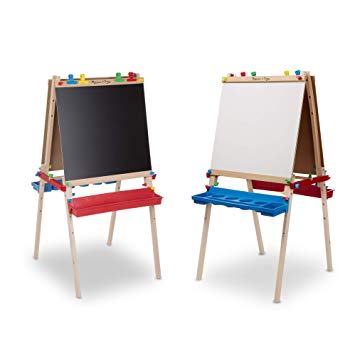 Mini Rainmaker ($10). Even though they may not realize they’re receiving presents during the holidays, I didn’t want to leave babies off the toy list! This little rainmaker is perfect to help infants alert to sound and visually track. Once they are a bit older, holding and shaking the rattle are developmental milestones. And, when a bit older than that, even preschoolers and elementary-aged children find the falling beads fascinating!
Mini Rainmaker ($10). Even though they may not realize they’re receiving presents during the holidays, I didn’t want to leave babies off the toy list! This little rainmaker is perfect to help infants alert to sound and visually track. Once they are a bit older, holding and shaking the rattle are developmental milestones. And, when a bit older than that, even preschoolers and elementary-aged children find the falling beads fascinating!
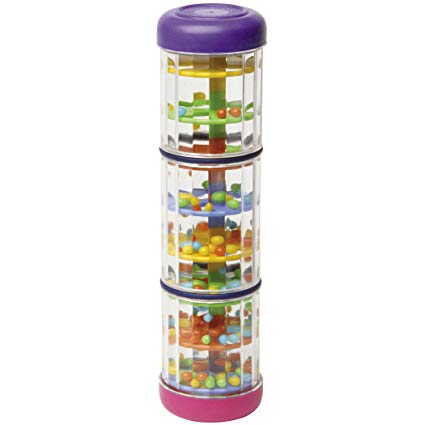
Mermaid fabric pillow ($15). This is the sequined fabric that changes colors when you run your hand over it to flip the sequins. This stuff is mesmerizing! I got both of my kiddos Mermaid throw pillows for their beds last Christmas. However, many different items utilize this same fabric, from bracelets, to book covers, to back packs, and many, many more! It is definitely the current fad, definitely fantastic for sensory stimming, and definitely fun! 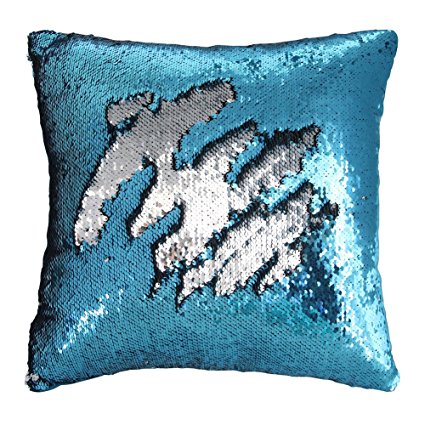
Spin Again ($30). This spinning gear toy is way cooler than a simple ring stacker that you can get for just $10. And, there is a reason that it has a 5-star rating on Amazon with over 500 reviews. I will admit that I was a bit shocked by the price when I searched for it on Amazon. However, I use it almost daily in the clinic with my toddlers, and it is my go-to for getting even the most resistant 2 year old to smile & participate. Yes, it is a great ring stacker for working on fine motor skills and eye hand coordination, but it also has the fantastic visual appeal of the gears spinning as they whirl down the central rod.
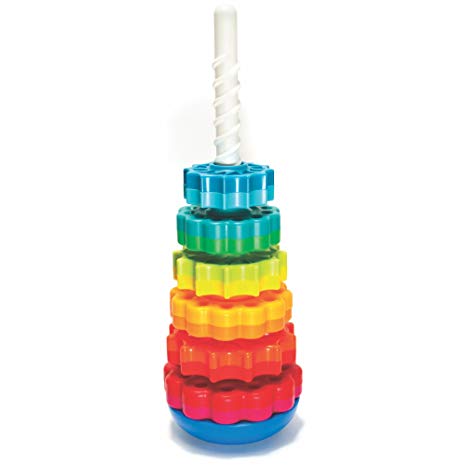
Piggy Bank toy ($15). We probably have at least three of these toy piggy banks, just in the occupational therapy clinic alone. We use them that much. They’re great for hand manipulation of the coins, isolating the index finger to open and close the door on the side, counting, labeling colors, etc. These are a definite winner amongst the toddler crowd. 
Simon game ($20). I have been on my anti-electronics soapbox many times before, and Simon provided an excellent alternative if you are so inclined. My own kids LOVE to play the classic Simon game, the one from when we parents were kids. AND, my kids don’t mind at all that they take Simon instead of the family’s ipad when their school has “Electronics Day” as rewards. My kids are spared long lectures from me as to not drop or lose Simon, and the other kids are actually mesmerized by a toy that they have never seen before. Even more benefit…as an OT mama, I also love how Simon works on short-term memory, attention to task, response speed, and fine motor skills. 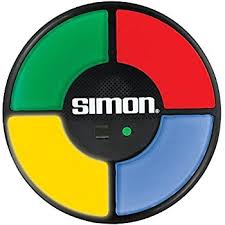
Spin-a-letter ($20). Here’s a dramatic but true story… When my son was a toddler, we were hit with an epic ice storm and lost power. In true Arkansas fashion, the sun melted the roads, but we were without power (and heat) for several days. So we packed up to stay with friends who had power and heat, but no kids or toys. What did I take with me that would not take up too much room, but would keep a toddler busy for hours? The Spin-a-letter! Granted, a decade later, we still have the Spin-a-letter songs stuck in our heads, but this toy is great for working on eye hand coordination and cause and effect. AND for the kiddos on the autism spectrum who love ABC’s and visual spinning, this is the perfect toy! 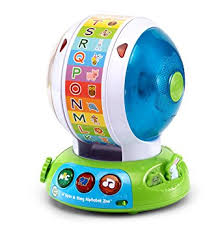 Nerf Nitro Longshot Smash ($20). These Nerf cars are new to me at the clinic. They are amazing! You load the cars into the car launcher gun, and these cars FLY across the room! Definite wins for working on fine motor skills as well as visual scanning.
Nerf Nitro Longshot Smash ($20). These Nerf cars are new to me at the clinic. They are amazing! You load the cars into the car launcher gun, and these cars FLY across the room! Definite wins for working on fine motor skills as well as visual scanning.
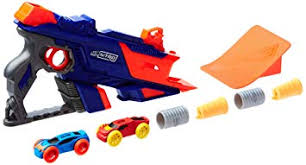 Pop The Pig ($17). This is the current favorite game here in the clinic. I use it with all my preschool kiddos. Taking turns, fine motor skills, number identification, color identification… all excellent skill acquisitions for preschoolers!
Pop The Pig ($17). This is the current favorite game here in the clinic. I use it with all my preschool kiddos. Taking turns, fine motor skills, number identification, color identification… all excellent skill acquisitions for preschoolers! 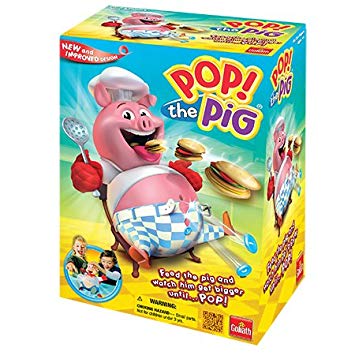 Educational Insights board games ($20). These games are also favorites in the clinic. In particular, the kiddos are really loving “Shelby’s Snack Shack Game” and “Hoppy Floppy’s Happy Hunt Game.” These games also work on counting, color identification, taking turns, etc. However, they also include players using tongs to pick up small items for improved fine motor skills. Yes, it all sounds like a lot of “work,” but we have had these games for almost a year, and our clients are still requesting them for every session!
Educational Insights board games ($20). These games are also favorites in the clinic. In particular, the kiddos are really loving “Shelby’s Snack Shack Game” and “Hoppy Floppy’s Happy Hunt Game.” These games also work on counting, color identification, taking turns, etc. However, they also include players using tongs to pick up small items for improved fine motor skills. Yes, it all sounds like a lot of “work,” but we have had these games for almost a year, and our clients are still requesting them for every session! 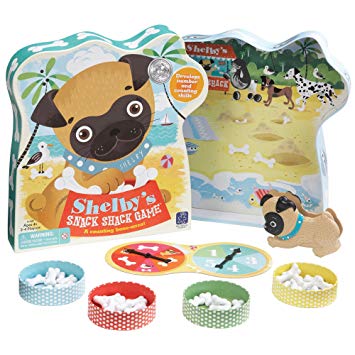
Classic board games (~$20-25). This is where you should use your own favorites and pick what YOU loved as a child! Uno, Connect 4, Guess Who, Twister, Jenga, Trouble, Yahtzee, Clue, Battleship, Blokus… All of these games work on problem solving, strategy, and good sportsmanship. Many of them also have an additional bonus of working on fine motor skills, visual perceptual skills, and/or gross motor skills. If all of this were not enough, the social/emotional benefits of “family game night” simply cannot be quantified. So pick your favorite, order a pizza, and make family game night a regular occurrence in your household.
Hand fidgets ($1-10 each). Slinkies, water wiggles, Koosh balls, water timers, stress balls, wind-up toys… All of these items are great! In fact, I have a personal sensory toy bucket in the clinic that is hands down the “reward” my clients request the most. These items serve the dual purpose of being sensory soothing as well as improving fine motor skills. These items can be ordered off Amazon, but as an added bonus, most can also be found at your local dollar store.
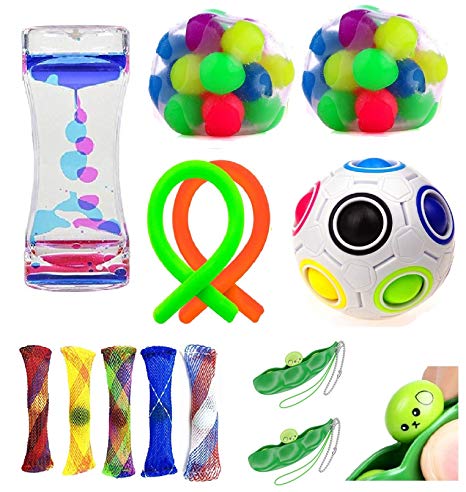 Pound A Ball ($20). This is one of my favorite cause and effect toys. Toddlers use a mallet to hammer a ball down through a hole and into the ball maze. Obviously, the ball rolling through the maze is thrilling, but fine motor skills and eye hand coordination are also required to place the ball in the hole and hit it properly with the mallet.
Pound A Ball ($20). This is one of my favorite cause and effect toys. Toddlers use a mallet to hammer a ball down through a hole and into the ball maze. Obviously, the ball rolling through the maze is thrilling, but fine motor skills and eye hand coordination are also required to place the ball in the hole and hit it properly with the mallet. 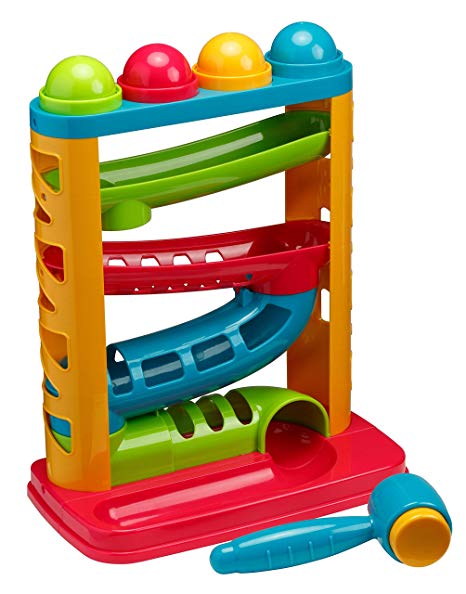 Marble Run ($35). Is your child too old for the Pound A Ball? Well then, time to graduate to Marble Run! In my world, this is definitely a favorite amongst all the cousins while at the grandparents’ house. And I love that kiddos from 7 years up to teens will work together on the same creation to get the marble from the start to the finish line – and maybe the adults join in on a bit of the problem solving fun, too! Once again, this activity targets fine motor skills, visual perceptual skills, and teamwork. But additionally, Marble Run also is quite visually appealing as a stim to those on the autism spectrum.
Marble Run ($35). Is your child too old for the Pound A Ball? Well then, time to graduate to Marble Run! In my world, this is definitely a favorite amongst all the cousins while at the grandparents’ house. And I love that kiddos from 7 years up to teens will work together on the same creation to get the marble from the start to the finish line – and maybe the adults join in on a bit of the problem solving fun, too! Once again, this activity targets fine motor skills, visual perceptual skills, and teamwork. But additionally, Marble Run also is quite visually appealing as a stim to those on the autism spectrum. 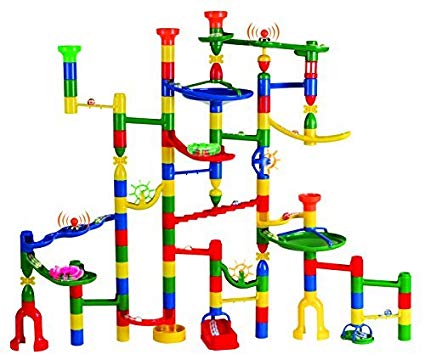 Plasma Car ($55). As my family members can tell you, I have a love/hate relationship with the Plasma Car. If you have never seen one, it is like a giant skateboard that the child sits on while moving the steering wheel back and forth to make the car move. The Plasma Car is definitely a winner when it comes to motor planning skills. And, they are compact enough that we use them inside at the clinic, and my own children use them inside at their grandparents’ house.
Plasma Car ($55). As my family members can tell you, I have a love/hate relationship with the Plasma Car. If you have never seen one, it is like a giant skateboard that the child sits on while moving the steering wheel back and forth to make the car move. The Plasma Car is definitely a winner when it comes to motor planning skills. And, they are compact enough that we use them inside at the clinic, and my own children use them inside at their grandparents’ house. 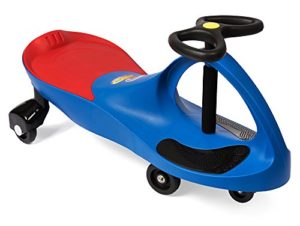
Mini Trampoline ($50). A mini trampoline is my #1 go-to for sensory input and gross motor skills. Very important for getting the wiggles out on these cold winter days! When searching out prices, look for the mini trampolines marketed toward adults rather than children, as the adult trampolines tend to be much less expensive and much more durable. As an added bonus, even the adults in the house can use them for exercise! The mini trampolines without handles can slide easily under the bed, and the ones with the balance handle can provide additional support for little ones. Both are WAY less dangerous than a standard trampoline. (Please note that standard trampolines are NOT recommended in this blog. Even with nets and other safety precautions, they are just not safe for the little sensory seeker!) And as always, children need supervision when using a mini trampoline! 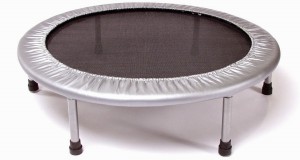 Doorway Swing ($180). I saved the most expensive for last so as not to scare anyone away with super high-ticket items. This doorway swing is not like those baby doorway jumpers. These are sturdy swings meant for children age 3+ and this particular model is rated to 300 pounds! I have had so many parents swear by them for their little sensory seekers, and with winter months upon us, indoor sensory and gross motor activities are a must!
Doorway Swing ($180). I saved the most expensive for last so as not to scare anyone away with super high-ticket items. This doorway swing is not like those baby doorway jumpers. These are sturdy swings meant for children age 3+ and this particular model is rated to 300 pounds! I have had so many parents swear by them for their little sensory seekers, and with winter months upon us, indoor sensory and gross motor activities are a must! 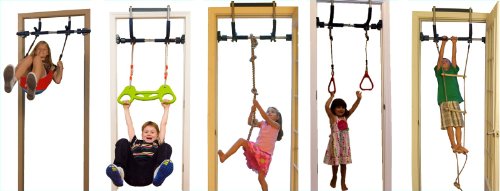
About the author:
Melissa Foster is a Nationally Board Certified Occupational 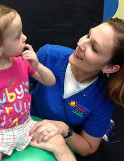 Therapist who received her Masters in Occupational Therapy from University of Central Arkansas in 2004. She came to TEAM in 2013 with a wealth of treatment experience in settings that range from NWA to Kansas to New York. Her primary interests are treatment of children on the Autism Spectrum, treatment of children with ADHD and treatment of children with sensory processing and behavioral disorders. Melissa is an active public speaker in the NWA community on topics related to Autism and Sensory Processing Disorder. She has authored several resource materials for parents on topics such as sleep and picky eating. Her blog for parents addresses a new topic every Monday and has become a popular resource for families. Melissa loves spending time with her husband and their two children. On warm summer days she enjoys sitting on her patio with a good book and a glass of iced tea.
Therapist who received her Masters in Occupational Therapy from University of Central Arkansas in 2004. She came to TEAM in 2013 with a wealth of treatment experience in settings that range from NWA to Kansas to New York. Her primary interests are treatment of children on the Autism Spectrum, treatment of children with ADHD and treatment of children with sensory processing and behavioral disorders. Melissa is an active public speaker in the NWA community on topics related to Autism and Sensory Processing Disorder. She has authored several resource materials for parents on topics such as sleep and picky eating. Her blog for parents addresses a new topic every Monday and has become a popular resource for families. Melissa loves spending time with her husband and their two children. On warm summer days she enjoys sitting on her patio with a good book and a glass of iced tea.
